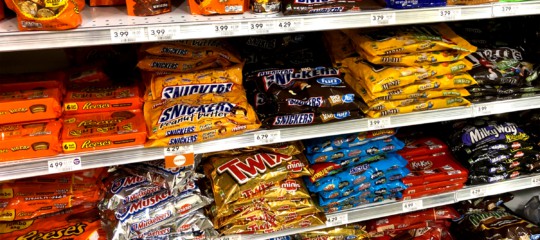Overall, there is a 32 percent increase in people who will not celebrate Halloween this year, compared to 2019. Just 12 percent of US households plan to go trick-or-treating, compared to 24 percent in 2019, although 25 percent of families still plan to give out candy, down from 38 percent last year. These findings are from a new Spotlight on Education survey from NORC at the University of Chicago. The survey also shows that 41 percent of parents say their children are disappointed or angry about the change in Halloween plans.
Overall US Halloween spending in 2020 has been estimated at a little more than $8 billion, down from the $8.8 billion spent last year, according to the National Retail Federation. Sales of costumes seem to have been hardest hit, seen as declining about $550 billion, more than the reduction in sales of candy and decorations combined.
Halloween candy sales seem to be holding their own, perhaps because candy companies took steps to address the situation – extending the holiday period by putting their products into stores earlier, pushing at-home consumption and targeting areas with ads that reflected local safety guidelines.
Chocolate and candy sales were up 13% for the four weeks ending Sept. 6, with Halloween chocolate specifically up more than 25%, according to IRI data reported in SupplyChainBrain. In the grocery channel alone, Halloween chocolate and candy sales are up 17.1%, according to the National Confectioners Association.
Contact us for more information on our supply chain solutions.




